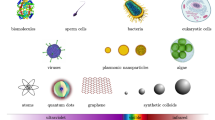Summary
Some of the language used in discussions of identical particles is analyzed and it is found that much of it, along with some of the concepts, is meaningless. The experimental behaviour is studied and shown to be a consequence of quantum meohanics without the need for specific assumptions about the behavior of identical particles, as the special characteristics follow from general principles.
Riassunto
Si analizza una parte del linguaggio usato nelle discussioni sulle particelle identiche e si trova che buona parte di esso, assieme ad alcuni concetti, è priva di significato. Si studia il comportamento sperimentale e si trova che esso è conseguenza della meccanica quantistica senza che ci sia bisogno di ipotesi specifiche sul comportamento delle particelle identiche, poiché le caratteristiche speciali seguono dai principi generali.
Резюме
Анализируется язык, и спользованный при рассмотрении тождес твенных частиц. Обнар ужено, что большая час ть этого языка, вместе с некоторыми кон большая часть этого я зыка, вместе с некотор ыми концепциями, оказ ывается лишенной смы сла. Рассматривается эксперименталное по ведение. Показываетс я концепциями, оказыва ется лишенной смысла. Рассматривается экс перименталное повед ение. Показывается, чт о экспериментальное поведение является с ледствием квантовой механики без требова ни Рассматривается экс перименталное повед ение. Показывается, чт о экспериментальное поведение является с ледствием квантовой механики без требова ния специальных пред положений о поведени и тождественных част иц, так же как определе нные х Показывается, что экс периментальное пове дение является следс твием квантовой меха ники без требования с пециальных предполо жений о поведении тож дественных частиц, та к же как определенные характеристики след уют из общих принципо в. является следствием квантовой механики б ез требования специа льных предположений о поведении тождеств енных частиц, так же ка к определенные харак теристики следуют из общих принципов. требования специаль ных предположений о п оведении тождествен ных частиц, так же как о пределенные характе ристики следуют из об щих принципов. тождественных части ц, так же как определен ные характеристики с ледуют из общих принц ипов. характеристики след уют из общих принципо в.
Similar content being viewed by others
References
A. M. L. Messiah andO. W. Greenberg:Phys. Rev.,136, B 248 (1964).
M. D. Girardeau:Phys. Rev.,139, B 500 (1965).
O. Steinmann:Nuovo Cimento,44 A, 755 (1966).
P. V. Landshoff andH. P. Stapp:Ann. of Phys.,45, 72 (1967).
K. Mr Carpenter:Ann. of Phys.,60, 1 (1970).
An interesting discussion of the concept of indistinguishability in classical statistioal mechanics is given byD. Hestenes:Am. Journ. Phys.,38, 840 (1970).
R. H. Stolt andJ. R. Taylor:Phys. Rev. D,1, 2226 (1970);Nucl. Phys.,19 B, 1 (1970);Nuovo Cimento,5 A, 185 (1971).
M. D. Girardeau:Phys. Rev.,139, B 500 (1965), discussion around eq. (15).
Some examples of this type of statement are:L. I. Schiff:Quantum Mechanics, second edition (New York, 1955), p. 223, « We use the wordidentical to describe particles that can be substituted for each other under the most general possible circumstances with no change in the physical situation »;P. A. M. Dirac:The Principles of Quantum Mechanics, third edition (London, 1947), p. 207, « the particles » (of the same kind) « are absolutely indistinguishable one from another. No observable change is made when two of them are interchanged. » and « … deny that any transition does occur when two similar particles exchange places. »;R. H. Dicke andJ. P. Wittke:Introduction to Quantum Mechanics (Reading, Mass., 1960), p. 311, «By “indistinguishable particles” we mean that if the position and spin co-ordinates of two of them are interchanged,there is no physical way of measuring that a change has been made in the system. »;P. V. Landshoff andH. P. Stapp:Ann. of Phys.,45, 72 (1967), « We argue that the particle permutations are certainly observables », (without, however, giving a prescription of how to observe them, nor stating what it means to observe a permutation, as opposed to the effect of the symmetry character of the wave function) « and then propose as the general definition of identical particles, that there be no other observables that distinguish between states differing only in the ordering of identical-particle variables ». They do not state whether writing variables in different orders is supposed to lead to observable results even for nonidentical particles.A. M. L. Messiah andO. W. Greenberg:Phys. Rev.,136, B 248 (1964) give as their basic requirement that identical particles cannot be distinguished that « Dynamical states represented by vectors which differ only by a permutation of identical particles cannot be distinguished by any observation at any instant of time ». It is unclear from this whether the permutation is supposed to be just moving symbols around, which cannot have any observable effect even for nonidentical particles except that it makes the symbol for the wave function look different, or whether it represents some physical operation, and if so what that operation is.
L. I. Schiff:Quantum Mechanics, second edition (New York, 1955), Chap. IX. The discussion here is better than usual.
V. G. Baryshevskii, V. L. Lyuboshitz andM. I. Podgoretskii:Sov. Phys. JETP,30, 91 (1970).
V. L. Lyuboshitz andM. I. Podgoretskii:Sov. Phys. JETP,28, 469 (1969);30, 100 (1970);33, 5 (1971).
Author information
Authors and Affiliations
Additional information
Work supported by a grant from Long Island University.
Rights and permissions
About this article
Cite this article
Mirman, R. Experimental meaning of the concept of identical particles. Nuov Cim B 18, 110–122 (1973). https://doi.org/10.1007/BF02832643
Received:
Published:
Issue Date:
DOI: https://doi.org/10.1007/BF02832643




